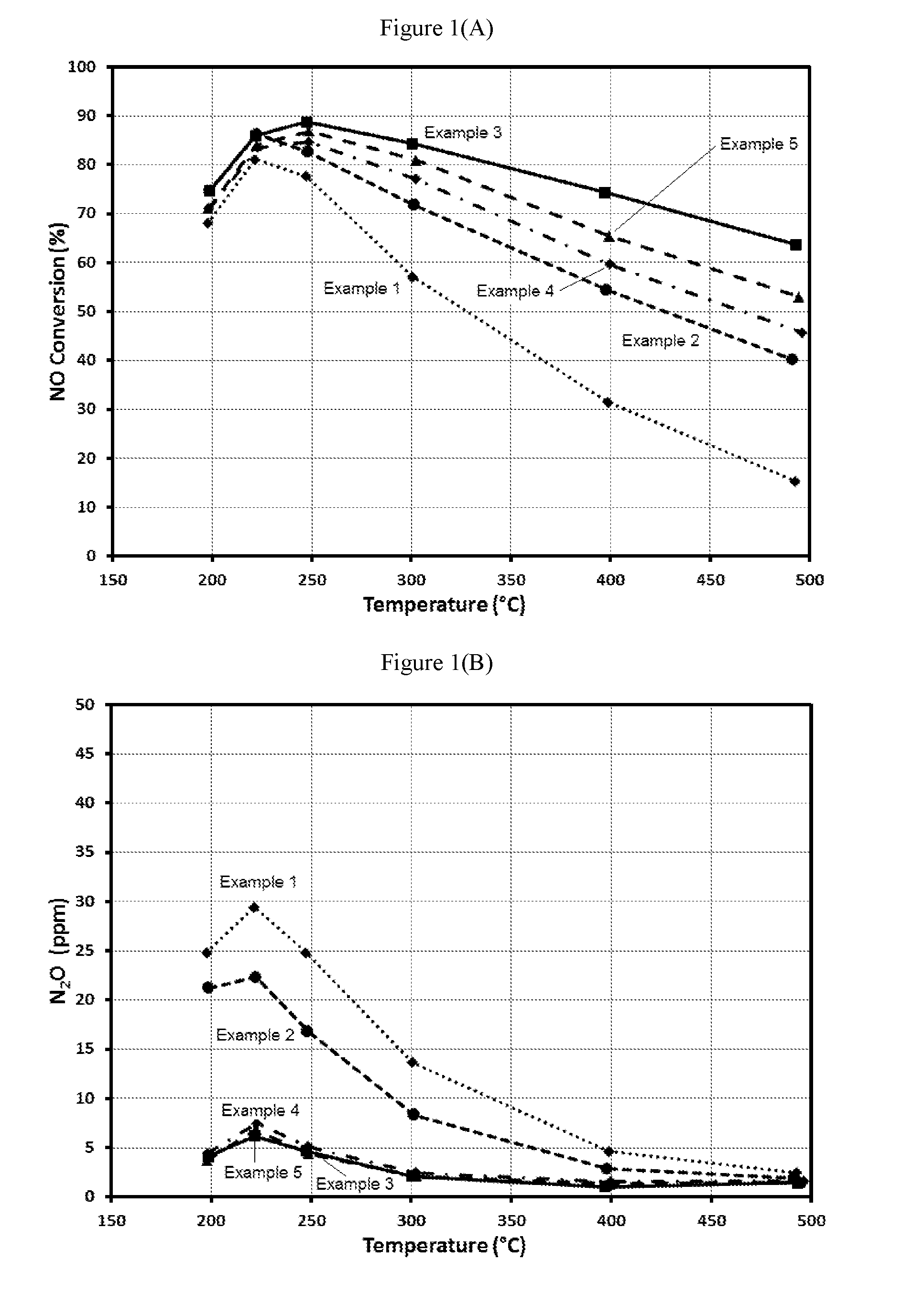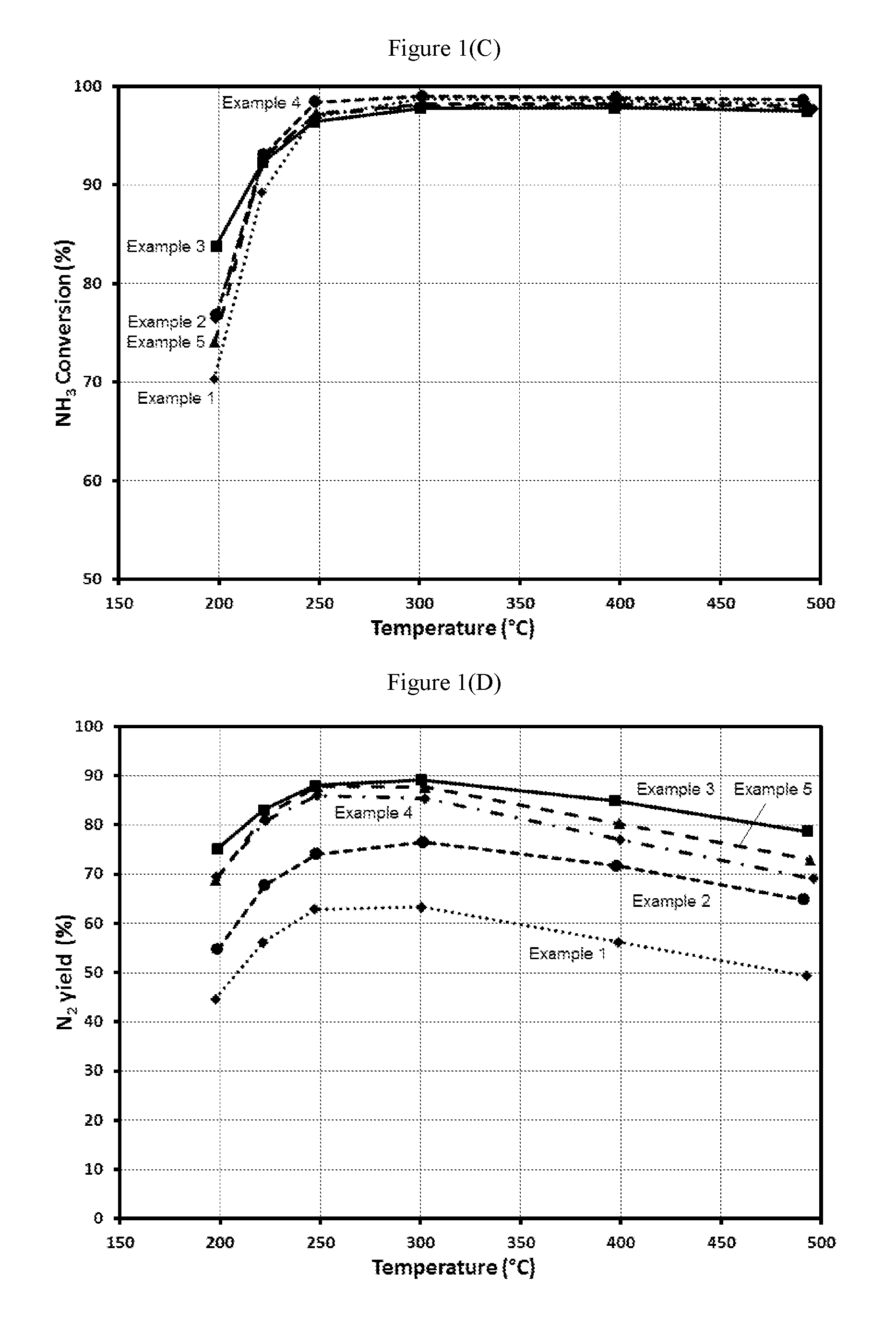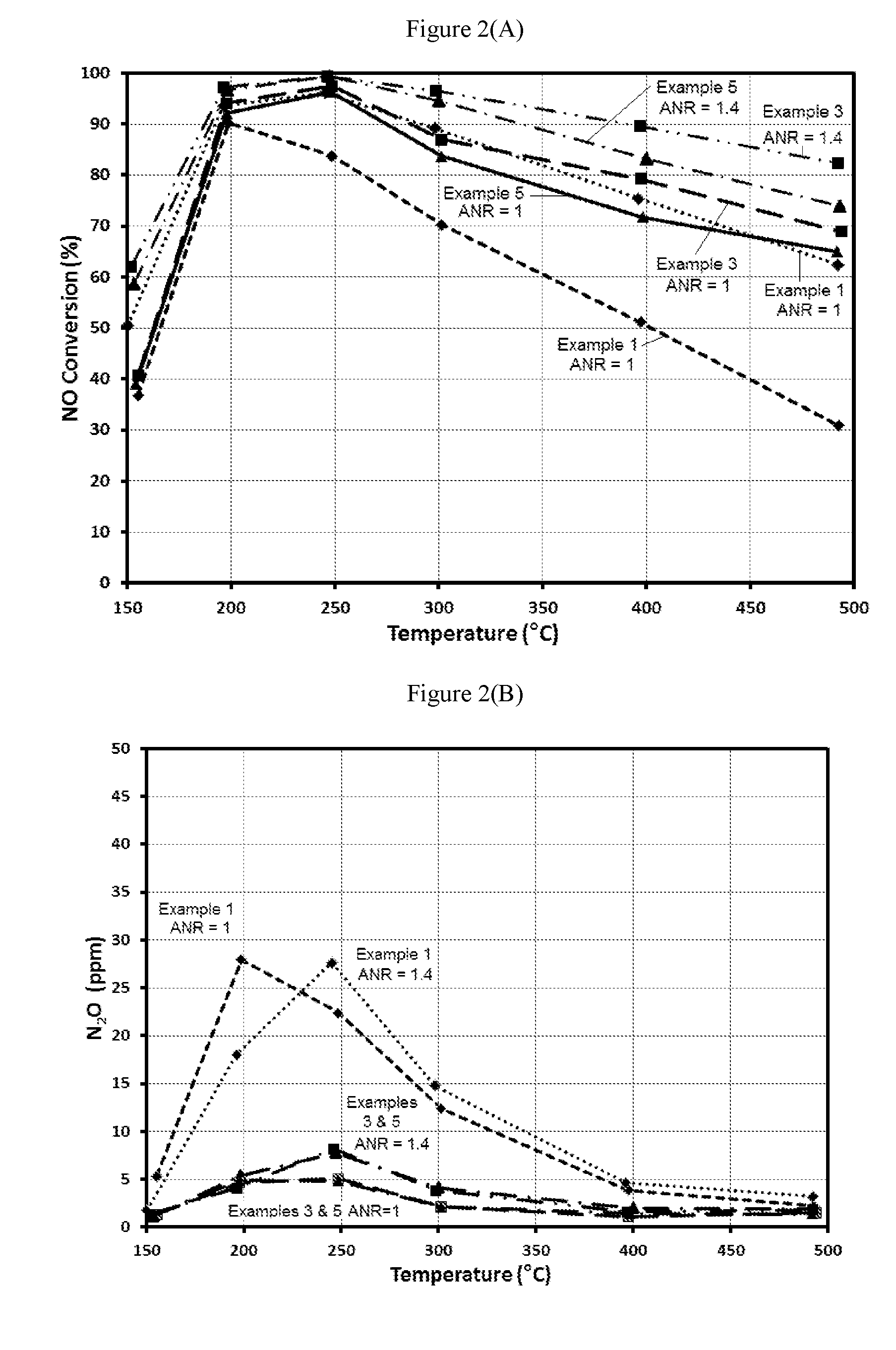Nh3 overdosing-tolerant scr catalyst
a catalytic reduction and overdosing technology, applied in physical/chemical process catalysts, metal/metal-oxide/metal-hydroxide catalysts, separation processes, etc., can solve the problem of secondary emissions of non-selective reactions with oxygen, adverse environmental effects, and unproductive consumption of ammonia by non-selective reactions. , to achieve the effect of reducing n2o formation and improving n2 yield
- Summary
- Abstract
- Description
- Claims
- Application Information
AI Technical Summary
Benefits of technology
Problems solved by technology
Method used
Image
Examples
example 1
Bi-Layer Formulation—Pt on Alumina with Cu-SCR Top Layer
[0066]A bi-layer formulation having a Pt on alumina bottom layer and a SCR top layer was used as a comparative example.
[0067]A bottom layer was applied to a ceramic substrate using a washcoat comprising 0.3 wt. % Pt on alumina. The washcoat was applied to a ceramic substrate, and then the washcoat was pulled down the substrate using a vacuum. The article was dried and calcined at about 500° C. for about 1 hour. The loading of Pt on the article was 3 g / ft3.
[0068]A top layer was applied to the substrate coated with the bottom layer using a second washcoat comprising a Cu-CHA, and then the washcoat was pulled down the substrate using a vacuum. The article was dried and calcined at about 500° C. for about 1 hour. The loading of Cu-CHA in the top layer was 1.8 g / in3. This material is Example 1. An aged sample was prepared by aging a sample of Example 1 for 50 hours at 620° C. in an atmosphere containing 10% H2O.
example 2
Bi-Layer Formulation—Pt on Alumina with a Higher Loading Cu-SCR Top Layer
[0069]A bi-layer formulation having a Pt on alumina bottom layer and a SCR top layer was used as a comparative example.
[0070]A bottom layer was applied to a ceramic substrate using a washcoat comprising 0.17 wt. % Pt on a blend of alumina and bare zeolite. The washcoat was applied to a ceramic substrate, and then the washcoat was pulled down the substrate using a vacuum. The article was dried and calcined at about 500° C. for about 1 hour. The loading of Pt on the article was 3 g / ft3.
[0071]A top layer was applied to the substrate coated with the bottom layer using a second washcoat comprising a Cu-CHA, and then the washcoat was pulled down the substrate using a vacuum. The article was dried and calcined at about 500° C. for about 1 hour. The loading of Cu-CHA in the top layer was 2.7 g / in3. This material is Example 2. An aged sample was prepared by aging a sample of Example 2 for 50 hours at 620° C. in an atmos...
example 3
Bilayer Blend of 1 wt. % Pt on MFI Zeolite (SAR=2100) with Cu-CHA in the Bottom Layer and Cu-CHA in the Top Layer with the Full Length of the Pt Bottom Layer Covered by the Cu-CHA Top Layer
[0072]A bottom layer was applied to a ceramic substrate using a washcoat comprising a blend of 4 wt. % Pt on a ZSM-5 (MFI framework with SAR=2100) and a Cu-CHA. The washcoat was applied to a ceramic substrate, and then the washcoat was pulled down the substrate using a vacuum. The article was dried and calcined at about 500° C. for about 1 hour. The loading of Pt, the zeolite and the Cu-CHA on the article was 3 g / ft3, 0.18 g / in3, and 1.8 g / in3, respectively.
[0073]A top layer was applied to the substrate coated with the bottom layer using a second washcoat comprising a Cu-CHA, and then the washcoat was pulled down the substrate to a distance of about 50% of the length of the substrate using a vacuum. The article was dried and calcined at about 500° C. for about 1 hour. The loading of Cu-CHA in the ...
PUM
| Property | Measurement | Unit |
|---|---|---|
| temperature | aaaaa | aaaaa |
| temperature | aaaaa | aaaaa |
| temperatures | aaaaa | aaaaa |
Abstract
Description
Claims
Application Information
 Login to View More
Login to View More - R&D
- Intellectual Property
- Life Sciences
- Materials
- Tech Scout
- Unparalleled Data Quality
- Higher Quality Content
- 60% Fewer Hallucinations
Browse by: Latest US Patents, China's latest patents, Technical Efficacy Thesaurus, Application Domain, Technology Topic, Popular Technical Reports.
© 2025 PatSnap. All rights reserved.Legal|Privacy policy|Modern Slavery Act Transparency Statement|Sitemap|About US| Contact US: help@patsnap.com



